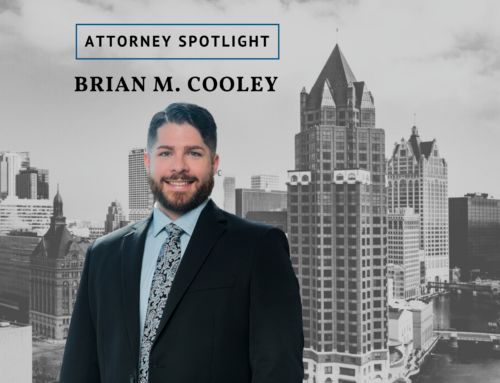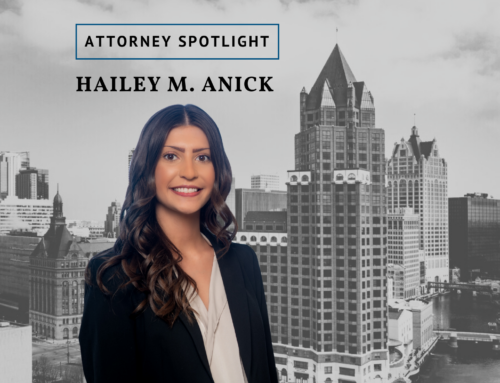The elements for a successful trademark infringement claim have been well established under both federal and state law. Overall, an aggrieved trademark owner—let’s call him the “senior trademark owner”—must show that the use of its trademark by another business has created a likelihood-of-confusion about the origin of the senior trademark owner’s products. To do this, the senior trademark owner must first show that it has developed a protectable right in its mark and that it began using it in commerce first. It must then show that the junior party’s trademark is likely to cause confusion, mistake or deception by erroneously creating the impression that junior party’s products are those of the party owning the senior mark.
Likelihood of Confusion
This “likelihood of confusion” notion is the prevailing legal standard for determining whether a business’s trademark is infringed. Generally, courts consider a number of factors to determine whether there is a likelihood of confusion between competing trademarks. Two of the key factors considered are, first, the degree of similarity between the marks in terms of sight, sound and meaning, and, second, whether the products of the parties are so similar that consumers are likely to mistakenly assume that they come from a common source.
Courts also consider other factors, such as the relative distinctiveness or weakness of the marks in question, the physical proximity of the marketplaces in which the products offered by each mark are sold, whether there is any evidence of actual confusion, and whether the junior trademark user adopted its mark expressly intending to benefit from any confusion with the senior trademark. Additionally, courts will look to the relative sophistication of the consumers purchasing the products of each party, as well as the degree of care that consumers are likely to use in selecting the products and identifying their source.
So, based on these factors, the adoption of a junior trademark which is identical or very similar to an already-existing senior trademark on the same type of product, in a common marketplace, will in most cases clearly give rise to a likelihood of confusion and constitute trademark infringement. For example, if I produce and sell a carbonated beverage called Mr. Pepper, my use of that mark will very likely cause confusion among consumers who may mistake my beverage for the well-known Dr. Pepper brand beverage.
On the other hand—and at the other end of the spectrum—the law allows identical or similar trademarks on completely unrelated products to co-exist if the marketplaces for each product are entirely separate and consumers are not likely to be confused as to the source of the products. For example, consider that Apple Computer and Apple Records legally co-exist with each other. Since consumers are not likely to think that Apple computers are being made by the Apple record company, or vice versa, there is no likelihood of confusion and no trademark infringement.
Between these two ends of the spectrum, however, lie many close cases where the courts will, to varying degrees, apply the factors I’ve mentioned. In such cases, the process for determining likelihood of confusion between trademarks can be a subjective one with unpredictable outcomes.
Primary Affirmative Defenses
So, what potential defenses are available to the person against whom trademark infringement is alleged? Two of the primary affirmative defenses in trademark infringement actions are fair use and parody.
Fair use occurs when one party uses the trademark of another for its ordinary, descriptive meaning—rather than its secondary, distinctive “trademark” meaning—to describe a product. The theory is that you should be able to use ordinary words to describe your own goods or services, even if those words happen to be part of someone else’s trademark. For example, using the term Sweet Tart to describe a cranberry drink has been held to be permissible despite a candy company’s SweeTARTS trademark for candy. Such a use of the term Sweet Tart for the cranberry drink was considered a purely descriptive use of the term and thus did not invoke the distinctive trademark meaning of the candy maker’s trademark.
In addition, certain parodies of trademarks may be a permissible defense to trademark infringement if not too directly tied to commercial use. The idea here is that artistic and editorial parodies serve a valuable critical function and are entitled to some degree of free speech protection. The upshot is that courts will usually try to balance First Amendment interests against the degree of likely confusion and damage that the parody might cause the trademark. Courts tend to be more sympathetic in the case of noncommercial parodies and less sympathetic to parodies that seek to sell something based on the parody.
So, use by Ralph Nader of the Mastercard trademark in a parody political advertisement was held permissible because his use of the term Mastercard, in that case, was considered part of political, noncommercial speech. But use of the trademark Lessbucks coffee for a coffee provider competing with Starbucks coffee was held not to be an allowable parody because the object of the joke in this case was a trademark of a directly competing product in the commercial marketplace.
Successful plaintiffs in trademark infringement actions are entitled to a wide range of remedies under federal law, including injunctions against further infringing use of the junior mark if the senior trademark owner can show that it will suffer irreparable injury if the injunction is not awarded. Monetary damages may also be awarded, and damages can be trebled under the federal Lanham Act if bad faith on the infringer’s part can be shown.
Randy Brotherhood devotes a substantial part of his practice to intellectual property, including patents, trademarks and copyrights. You can view his full bio by clicking here.






